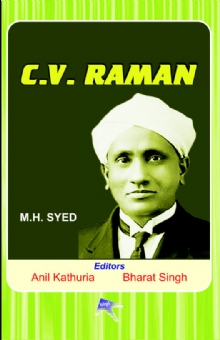Sir Chandrasekhara Venkata Raman, (7 November 1888 − 21 November 1970) was a great physicist and Nobel laureate in Physics, recognized for his work on the molecular scattering of light and for the discovery of the Raman effect, which is named after him. Venkataraman was born at Thiruvanaikaval, near Trichinopoly, Madras Presidency. He gained his M.A., obtaining the highest distinctions. In 1934 Raman became the director of the Indian Institute of Science in Bangalore, where two years later he continued as a Professor of Physics. Other investigations carried out by Raman were experimental and theoretical studies on the diffraction of light by acoustic waves of ultrasonic and hypersonic frequencies and those on the effects produced by X-rays on infrared vibrations in crystals exposed to ordinary light. In 1947, he was appointed as the first National Professor by the new government of Independent India. Raman retired from the Indian Institute of Science in 1948 and established the Raman Research Institute in Bangalore, Karnataka, a year later. He served as its director and remained active there, until his death in 1970.
Contents :
Preface
1. An Eventful Life
2. Journey of Great Life
3. An Illustrious Career
4. The Great Genius
5. The Great Indian Scientist
6. The Great Physicist
7. Nobel Laureate Raman
8. Raman`s Global Status
9. Raman`s Impact on Science
10. Raman Effect, the Revolutionary Achievement
11. Views on Raman
12. Lectures and Letters
13. Raman`s Life at a Glance
14. Golden Words of Raman
Bibliography


